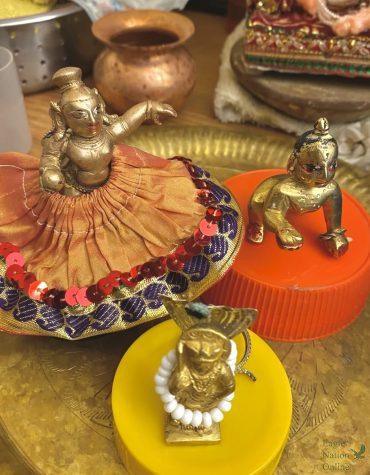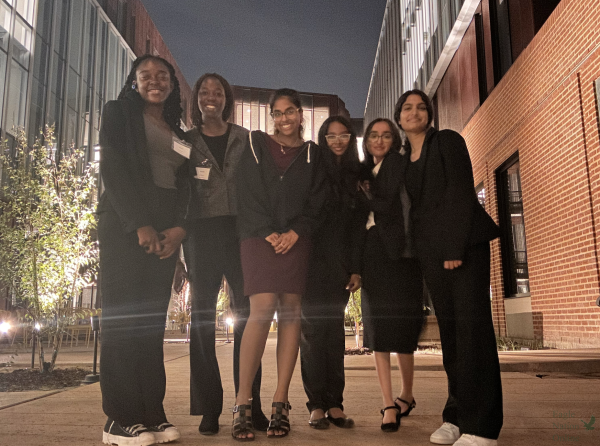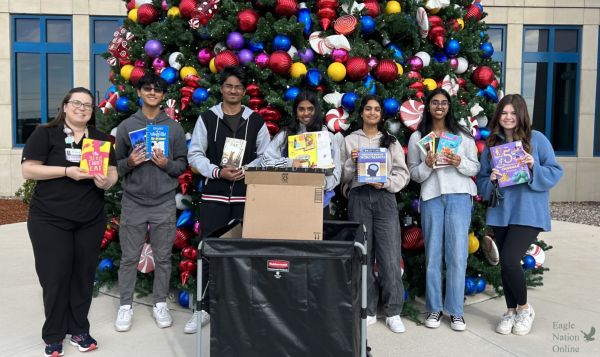Column: Diwali – Here’s what to know about Hindu festival of lights

Hindus, Jains and Sikhs around the world celebrated Diwali together this past Thursday, Nov. 4.
Diwali, or Dipawali, is a festival of lights and one of the major festivals celebrated by Hindus. Arguably the most important Hindu festival, comparable to the value of Christmas for Christians, Diwali represents the spiritual triumph of good over evil, light over darkness and knowledge over ignorance.

The festival usually lasts five days and is celebrated during the Hindu lunisolar month Kartika.
Diwali gets its name from the practice of lighting many small lamps or decorated tea lights (deepa) in a path to the home to symbolize the inner light that protects from spiritual darkness. This practice comes from the most popular story associated with Diwali, the story of Lord Rama’s return to Ayodhya after a 14-year exile and beating the evil King Ravana. He returned after killing the evil king Ravana. The people of Ayodhya were so ecstatic on the arrival of Lord Rama, who ruled over Ayodhya, that they lit up the entire city with earthen lamps.
During Diwali, families gift each other new clothes, gold jewelry, eat sweets and food together, and light fireworks.
The third day of Diwali is the most important day, when people perform Lakshmi puja (worship of the goddess Lakshmi) to welcome the goddess of wealth and success, Lakshmi, into their homes. It is believed that those who perform Lakshmi puja will be blessed with good health, prosperity, abundance, and wealth by Lakshmi. The god Ganesh, also called Ganapati, is the elephant-headed Hindu god of new beginnings and destroyer of obstacles. He is worshiped alongside Lakshmi.
In the days leading up to the Lakshmi puja, it is important to clean your home and get ready for a “new beginning”, mentally and physically. Orange marigold garlands are typically hung around the house, as well as Ashoka leaves. Lamps or tea lights are placed on the windowsills and doorsteps, and rangoli designs are created by the women in the household.

Rangoli is an Indian art form where patterns are created on the floor or a tabletop using materials such as powdered lime stone, dry rice flour, colored sand, quartz powder, flower petals, and colored rocks. It is thought to bring good luck, prosperity on the house and in the family, and to welcome guests, especially on festivals like Diwali.
Diwali is similar to Thanksgiving — food and sweets are always prepared in the days leading up to the puja. Some Indian sweets that are enjoyed are rasgulla, rasmalai, laddu, gulabjamun and kulfi, also known as “Indian ice cream”. Rasgulla and rasmalai are delicious and made with simple ingredients — rasgulla only requires chenna (curdled milk), rosewater, sugar water and cardamom.
Some popular Indian savory snacks that can be eaten during Diwali are samosas (stuffed pastries), purans (spiced or sugary flatbread) and pakoras (savory deep fried stuffed snacks).
Jains and Sikhs have different reasons than Hindus to celebrate Diwali. According to National Geographic, to Jains, Diwali marks the nirvana, or spiritual awakening, of Lord Mahavira on October 15, 527 B.C. In Sikhism, it honors the day that Guru Hargobind Ji, the Sixth Sikh Guru, was freed from imprisonment.
Your donation will support the student journalists of Prosper High School. Your contribution will allow us to purchase equipment and cover our annual website hosting costs.

Honors, Experience and Awards:
5 Best of Sno publications.
5th place in Copy Editing, district UIL meet 2021
Honorable mention- Podcast interview, 2021 TAJE Fall Fiesta
UIL Journalist 2020-2021, 2021-2022
Quill and Scroll Society member 2021-2022
1st place in Copy Editing for CENTEX UIL meet 2021-2022
3rd place in Copy Editing for Aubrey UIL meet 2022
2nd place in Copy Editing for NorTex UIL District meet 2022
National Silver award for poetry from the Scholastic Art & Writing organization
National Recognition Award from College Board
AP Scholar with Distinction Award
2 Best in Texas News & Broadcast Awards, 2022: Personal Opinion Column- Honorable Mention, News Story- Honorable Mention
President of the Classic Book Club, 2020-onwards
Member of the National Spanish Honors Society (NSHS)
PHS Award for Academic Excellence in Newspaper II, 2022
Dean’s Scholarship for Cornell University Pre -College Program
Sibley Scholarship for Brown University Pre -College Program
CIEE Global Navigator Scholarship












